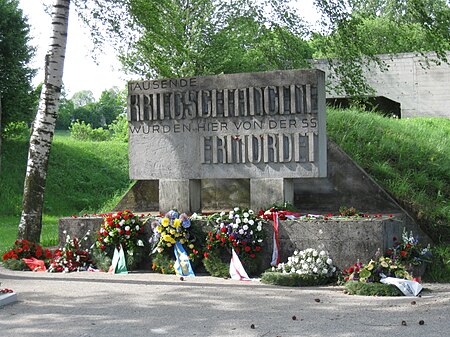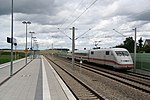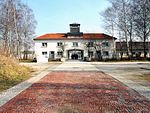Hebertshausen shooting range

Hebertshausen shooting range (German: Schießplatz Hebertshausen) was a shooting range at Dachau concentration camp, located two kilometres north of the Dachau main camp for SS guards that used Soviet live prisoners of war as targets. It was built in 1937-38 as an expansion to Dachau concentration camp. Between 1941 and 1942, more than 4,000 Soviet prisoners were murdered on the site. These were mainly officers, communist officials, and Jews. The victims were “singled out” according to ideological and racist criteria by Gestapo Einsatzkommandos in the POW camps of the military districts of Munich, Nuremberg, Stuttgart, Wiesbaden and Salzburg. After World War II, American troops assumed control of the site and continued to use it as a firing range. It is now a memorial to Nazi victims.
Excerpt from the Wikipedia article Hebertshausen shooting range (License: CC BY-SA 3.0, Authors, Images).Hebertshausen shooting range
Akazienring,
Geographical coordinates (GPS) Address Website Nearby Places Show on map
Geographical coordinates (GPS)
| Latitude | Longitude |
|---|---|
| N 48.2875 ° | E 11.461 ° |
Address
Gedenkstätte ehemaliger "SS-Schießplatz Hebertshausen"
Akazienring
85241
Bavaria, Germany
Open on Google Maps











